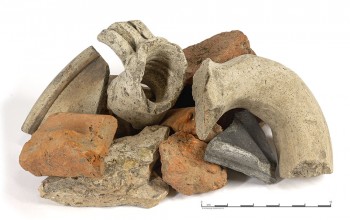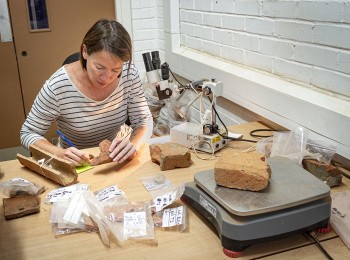
The checklist is designed to be flexible, for use with three types of report, as appropriate to different types of finds assemblage, and depending on the significance of the overall project, or the category assemblage, or of individual objects.
Reports should be prepared to a level that accords with the aims of the project and is commensurate with methods of recovery and the quality or importance of the material, taking into account the potential of artefacts and ecofacts to contribute to understanding the character of a site, the activities performed there and social and economic context.
In every case, where it is possible and desirable, a detailed description of an object or assemblage must be reported; for example, in even a basic catalogue, identify the specific type of a brooch or coin.
For some projects, it will be possible to determine the appropriate category of finds report during the planning stage. Use of the checklist at that stage will provide a useful tool for framing finds work as the project progresses and will also inform any re-evaluation of the agreed approach should the project produce unexpected results.
Finds reports may be classified into three types.
Type 1: Description (for relatively insignificant assemblages)
Some category assemblages, or those from a project as a whole, merit little detailed reporting. They might be considered to be relatively insignificant; for example because of the way in which they were recovered (eg a watching brief has recorded little associated structural evidence) or because they are badly fragmented and mostly re-deposited.
In such cases, the level of recording will necessarily be limited, and the finds report will consist principally of a description and quantification of the material evidence recovered, with some chronological interpretation, relating it as far as possible to other known finds from the same site or area. A more detailed description may be required if the finds have not been selected for the project archive.
Type 2: Appraisal (where there is the potential for further work)
Some finds reports are focused on establishing the potential for further work. These include assessment reports and studies of finds from field evaluations.
In an appraisal, the aim of the report is to provide information that will enable and inform further work. This will usually be based on a record of the character and quantity of the assemblage and consider its quality in relation to states of preservation, chronological coherency, site formation processes, types of objects present and interpretations of social and economic conditions.
Type 3: Full analysis (following detailed analysis of significant assemblages)

Reports based on full analysis usually represent the final output from an archaeological project and there could be several of these, depending on the publication and dissemination requirements/proposals set out in either the Written Scheme of Investigation (WSI) or Post-excavation Assessment (PXA).
Such reports are likely to be based on detailed records, with the aim of presenting the results of that analysis in relation to the fullest interpretation of the site. Full analysis reports may be drawn into publication reports in full or in an edited version, but the original report will remain an important component of the final project archive. This type of report is most likely to include the majority of the criteria included in the checklist.





